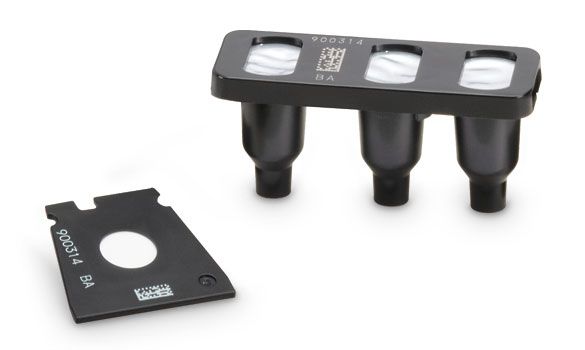
Catalyst Bile Acids
Reference laboratory accuracy and comparable range
- Test with ease, convenience, and efficiency. Load-and-go workflow delivers a result in approximately 15 minutes.
- Recommend next steps with confidence. Comparable range to IDEXX Reference Laboratories (1.0-180.0 µmol/L).
- Maintain continuity of care. Same-day pre- and postprandial results make patient management seamless.
How to run Catalyst Bile Acids
Running bile acids on a Catalyst One Chemistry Analyzer
- Enter the sample information on the IDEXX VetLab Station.
- Load the slide, sample, and reagent.
- Close the sample drawer and press the Start button on the analyzer.
- At the end of the run, identify the result type (preprandial, postprandial, other) on the IDEXX VetLab Station.
Running bile acids on a Catalyst Dx Chemistry Analyzer
- Enter the sample information on the IDEXX VetLab Station.
- Select the patient and sample type on your Catalyst Dx Chemistry Analyzer.
- Load the slide, sample, and reagent.
- Close the sample drawer and press the Start button on the analyzer.
- At the end of the run, identify the result type (preprandial, postprandial, other) on the IDEXX VetLab Station.
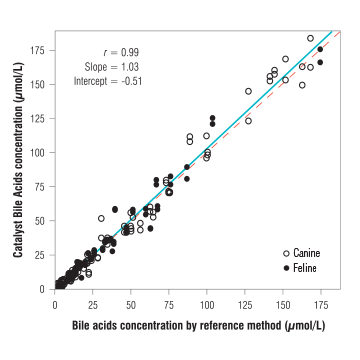
Performance
This white paper details the correlation between Catalyst Bile Acids and the reference method as well as the test’s precision in the range of clinical interest.
Get answers to common questions
Fast the dog or cat approximately 12 hours and collect a fasting (preprandial) blood sample.
- Obtain result from preprandial Catalyst Bile Acids.
Feed the animal a high-fat meal to stimulate gallbladder contraction.
- The minimum amount of food is 2 tsp for small patients (<10 lb) and 2 Tbsp for large patients.
- If encephalopathic effects of protein are anticipated, use a restricted-protein food mixed with a small amount of corn oil.
Two hours after feeding, collect a postprandial blood sample.
- Obtain result from postprandial Catalyst Bile Acids.
Canine and feline: 1.0—180.0 µmol/L
Compatible sample types include serum, lithium heparin plasma, and whole blood using the Catalyst Lithium Heparin Whole Blood Separator. The recommended sample volume to run Catalyst Bile Acids depends on the type of sample you're using. For whole blood, we recommend 700–800 µL. If you’re testing serum or plasma, we recommend at least 125 µL when run alone or 300-400 µL to run Catalyst Bile Acids with other tests.
There are 6 Catalyst Bile Acids slides per box. With pre- and postprandial testing, this provides you with bile acids testing for 3 patients.
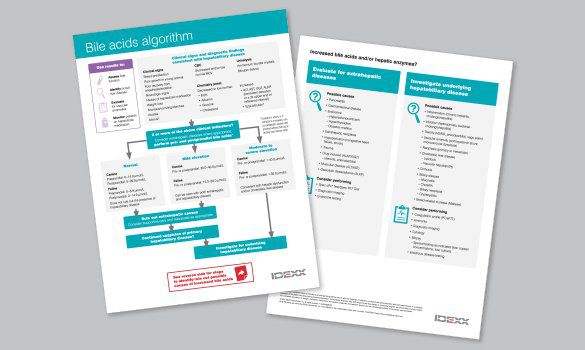
The IDEXX bile acids algorithm
This algorithm will help you identify hepatobiliary disease and decreased liver function based on test results. Use the information to determine when to perform bile acids testing and what to do with increased results.

Case study: Peggy
Catalyst Bile Acids led to an unexpected diagnosis in a puppy presenting for straining to urinate
Peggy, a 9-month-old Labrador retriever presented to her veterinarian for evaluation of inappropriate urination and straining to urinate.
Order Catalyst Bile Acids
Get the most out of Catalyst Bile Acids
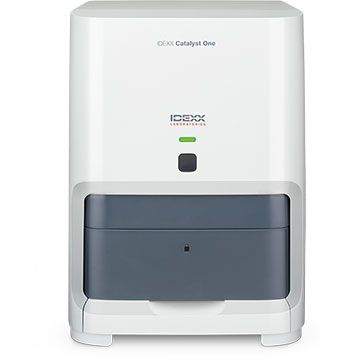
Fast, accurate results
See results for total T4, chemistry, electrolytes, and more, in one run with the Catalyst One Chemistry Analyzer.
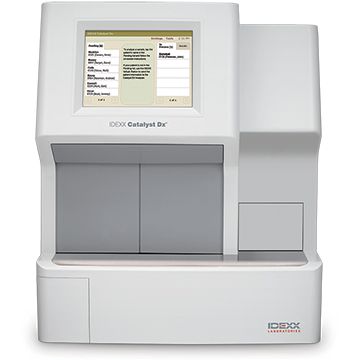
Multiple samples in minutes
Results for total T4, chemistry, electrolytes, and more, for multiple patients with the Catalyst Dx Chemistry Analyzer.
Support
Customer service
We're here to help you 24 hours a day, 7 days a week.
1-800-248-2483
IDEXX Test Promise
If an IDEXX test does not perform as promised, just call us and we’ll credit your IDEXX Points account with 100% of the test’s value.
Order tests & supplies
You can now order your companion animal SNAP tests and in-house analyzer consumables from an authorized IDEXX distributor or directly from us.